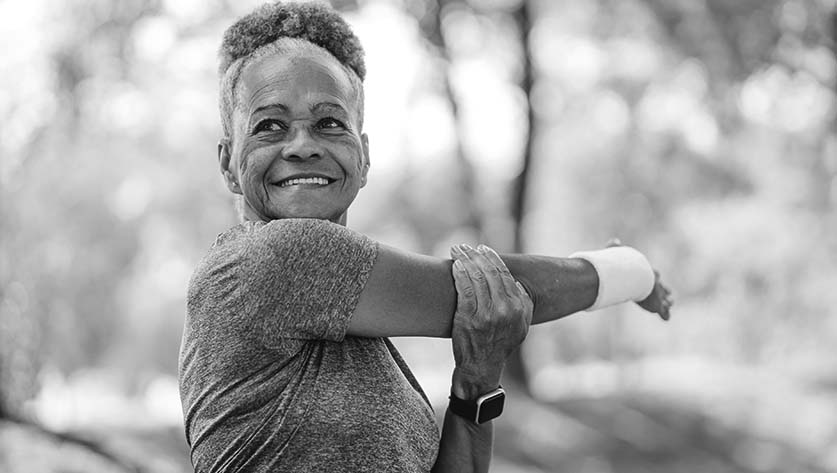
When you were younger, your level of flexibility helped you excel in team sports, climb trees, or turn cartwheels in the grass. As you get older, the role of flexibility becomes simpler, yet much more crucial. You must be flexible enough to do basic tasks, like sitting or getting dressed, and your ability to do so diminishes much earlier than you think. It can happen as early as your 50s.
At the age of 55, you may begin to experience a decrease in joint flexibility of nearly six degrees every 10 years. This means, by the age of 75, you may have lost 12 degrees of flexibility in your hips. Plus, the challenges of less flexibility may cause you to be more sedentary, and your inactivity can compound the loss of flexibility. That makes it important to stay as flexible as possible to combat the challenges of the senior years.
When you learn how to maintain flexibility as you age, you can improve your circulation, ease muscle stiffness, and lessen your risk of injury. You can also better maintain your balance, which helps safeguard your independence.
To ensure your overall wellness, it’s a smart strategy to work on flexibility in your 50s or before, although it’s never too late to get started. We made a free guide you can download to help you track your progress.
Flexibility exercises help your joints maintain movement as you age. You have many options for flexibility training, such as group classes for yoga, tai chi, and Pilates. Strength training programs also help you be more flexible because lifting weights helps improve joint mobility.
Flexibility training doesn’t have to be complex if you’re getting started with fitness. Stretching exercises can also increase flexibility.
You can do two types of stretches — static or dynamic stretches — although dynamic stretches are generally safer.
With static stretching, you hold one position for an extended period, which creates muscle tension and may cause pain. These are better performed when your muscles are already warmed up, such as after you complete aerobic exercise.
Dynamic stretches can be done anytime and are especially helpful as a warmup for exercise. These allow you to move your joints for flexibility training and improved mobility.
As with any new exercise program, please consult your physician before attempting this list of important stretching exercises for seniors. These dynamic stretches work various areas for total body flexibility.
Download the free guide "4 types of exercises that are important over 50" >
Photo credit: iStock
Wellabe offers life and supplemental health insurance plans to help you prepare for good days and bad. We’ll always be here to empower you to be well — well prepared, well protected, and well loved.